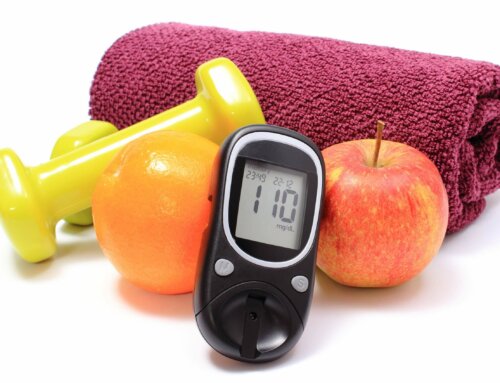Everyone should be concerned about fitting exercise into their daily routines. If you have diabetes, it is essential to keep moving. A recent study conducted by the University of California showed lifting weights and resistance training is beneficial for people with diabetes.[1] The study found an association between muscle mass and minimizing insulin resistance. A lower muscle mass could be a risk factor for insulin resistance. Losing fat weight and building muscle have a positive impact on insulin resistance.
Here are a few ways you can incorporate some level of weight training into your exercise routines:
- Weight lifting is a popular way to build muscle. Free weights include hand weights, barbells and dumbbells to work a group of muscles at the same time. Weight machines make it easier to isolate a particular muscle. Make your muscles work harder than usual to boost your body’s muscle mass.
- Circuit training is a series of exercises using weights. Weight training can be done at home or at the gym. Beginners should have a spotter to supervise and ensure their weight lifting routine is being done safely.
- Resistance bands, a medicine ball and your own weight are also be used to build strength. Resistance bands are used independently or in a special resistance training machines. Push-ups are an excellent way to use your own weight to build muscle. Shake up your routine by using exercise bands with Pilates moves.
- Add aerobic activity to your exercise routine to strengthen your heart muscle and lungs. Aerobic exercise also helps your muscles use oxygen more effectively. Regular aerobic exercise includes brisk walking, running or using a stationary bike. You might want to try an aerobics class such as Zumba or Jazzercise to mix it up.
Your goals are to maintain a normal body weight and build muscle without causing injuries. Start slowly then increase your exercise activity as your body adjusts. You don’t need expensive equipment to get started. There are many types of strength training based on your abilities, budget and exercise preferences.
Consult with your doctor to make sure which exercise activities are safe. Start slowly then increase your repetitions and exercise time over a period of a few weeks. Do stretching to cool down your muscles after every workout. Beginners might have sore muscles for up to 3 days after exercising. If an exercise feels painful, stop and consult with your doctor to see if you need to modify your routine.
[1] http://www.huliq.com/10559/pumping-iron-may-ward-type-2-diabetes
NOTE: Consult your doctor first to make sure my recommendations fit your special health needs.






Leave A Comment